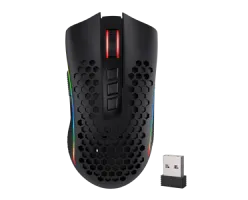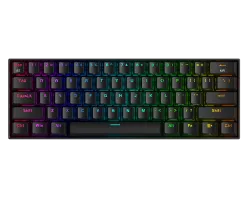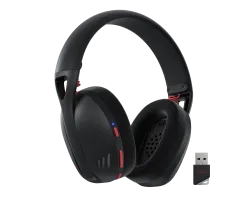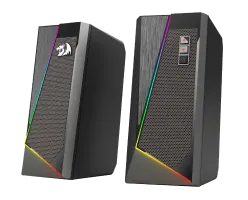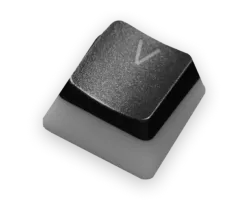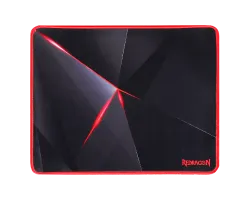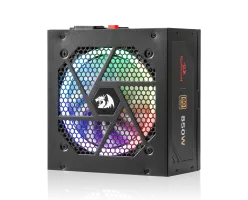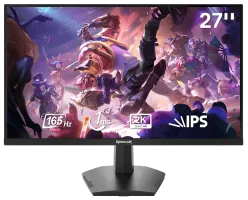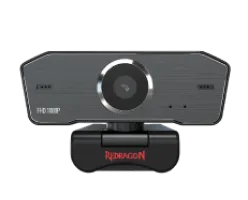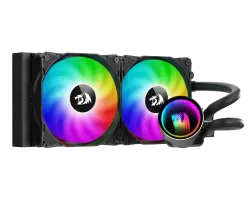
Briefly: Modular 104 Brown Switch Keyboard with minimal footprint and elegant design at half the cost of similarly featured name brand keyboards.
Key Features:
1) Brown Switches, tactile feel like blue switches but without the audible click
2) Modularity! Switches can be swapped out using included metal key switch tool.
3) Swappable switches mean easy repair and customizability with any compatible 3-pin key switch.
4) Standard Cherry Key Cap stems, allows customization with Cherry MX style key caps, o-ring dampening.
5) Double-shot key caps, light through lettering will not rub out with use.
6) Key cap character font is elegant, not too unusual, nor aggressive.
7) 104 key layout, includes number pad. Linear raised line on F-J-Num5 allow position fingers by feel.
8) Base frame is minimal size for 104-keys. No large "chin" or "forehead"
9) Base frame is sturdy and steady. HEAVY metal frame, rubber feet, flip-out feet also rubberized.
10) Includes 8 sample spare switches. All four types offered by Outemu, two of each included.
11) Vibrant and mesmerizing RGB, 18 modes choosable from keyboard using Fn key combos. Each mode with multiple color options, and brightness levels.
12) RGB, 5 Macros, Single Key settings are remembered by onboard memory, retained across reboots and different computers
13) Redragon Keyboard software for K556, is completely optional - great majority of RGB lighting options available via key combos.
14) Software allows 5 macros per Profile, key function reassignments, RGB mode selection, RGB color picker.
15) NKey Rollover - simultaneously register any number of key pressed at the same time. (tested to ~10 keys)
Potential Negatives:
1) Incompatible with IOGear KVM Switch (essentially a USB hub), does not complete start up routine (blue light spiral ends halfway)
2) While using flip out feet to raise the back of the keyboard, front bottom edge of the metal frame directly contacts table top, not protected by rubber feet.
3) RGB modes are predetermined, no provision for single key RGB lighting customization.
4) RGB colors are not all equally vibrant. Yellow, Blue, White colors are less vibrant or slightly off.
4) Fn+ combos are 'laser-engraved' on the keys, not part of the double-shot process, so does not light up.
5) 104 keys means no dedicated media keys on top right, area used for status indicator lights instead; sound volume functions available via Fn+ combo.
6) Indicator lights are red color only, no RGB or brightness options. Very bright since the LEDs are not obscured by keys
7) Key cap walls are thin, but are double-shot and adequate for price range.
8) Heavy construction, not optimal for portability / LAN parties; consider instead TKL keyboards.
Comparisons with the popular Redragon K552/K551
1) Slightly quieter Brown switches vs the Blue switches using on K552/K551 (and most mechanical keyboards)
2) Key cap lettering style is more elegant than on K552/K551 series keyboards.
3) Heavier metal frame vs plastic casing on the K552/K551
4) RGB lighting modes on the K552/K551 have been updated over the years, and most recent models offer same 18 modes.
5) Key switches on K556 are modular; replace broken or worn out switchers, change switch brands, styels if desired.
6) Ten-Keyless form factor only available only as K552
Suggestions for Improvement / Development
1) Tenkeyless (TKL) form factor using this elegant design. Compared to current K552 would be heavier, but features smaller elegant design with brown switches.
2) Move front rubber feet closer to the edge, so front edge does not scraping against the table when back feet raises the angle of the keyboard.
3) Frost the status LEDs so they are not as bright; or make them RGB (probably more costly).
4) Consider a 108 revision, miss the dedicated sound volume up/down/mute keys. Hunting for the Fn+ Combo takes getting used to.
5) Cable routing channels under the keyboard route the cable straigth back, left, or right.
6) Detachable Cable, especially if TKL form factor.
7) Consider a more subtle black on black Redragon badge. The current design isn't too flashy, more subdued.
8) Accessories from Redragon: Compatible Key Switches to purchase in sets, Outemu are not as commonly available
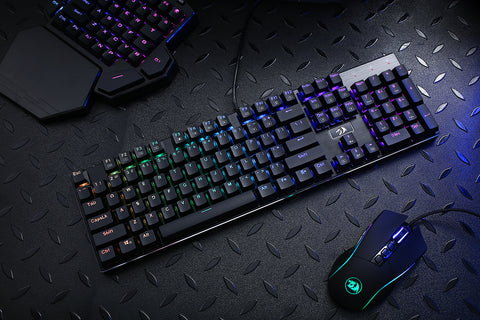
General Discussion on Redragon K556 Keyboard
The point of mechanical keyboards centers around the key switch; specifically, the typing experience as you interact with a computer. So obviously the implementation of the key switch takes priority.Durability is also important, and best I can tell most keyboard switches are rated 50 million presses, unless specified. However, switch style is not the first thing I look for.
Mechanical keyboards are so popular now, that every brand offer keyboards with one of the standard keyboard switch styles. So instead of switch type, form factor is the first thing I look at when choosing a keyboard. The number of keys determines the overall footprint on your desk. Again personal choice determines what is best for you. I use the number pad often, so its inclusion is helpful. In situations that don't require a number pad, a tenkeyless keyboard might be preferred. The K556 has the smallest footprint possible for a full-sized keyboard. There is no extra "forehead" or "chin" adding to the size of the frame.
After the computer case, the aesthetics of the keyboard, mouse, and monitor determine the look of your PC. Although I don't prioritize on style and RGB lighting, I do appreciate the classy elegant design of the K556. The very small minimalist metal frame with chamfered outline is suitible for a nice office.The Redragon logo on one of the product images makes it appear to be high contrast white on black badge.Actually it is a black badge with a shiny metallic outline and the Redragon logo, same as the chamfered motif. It is much more appealing in reality than the image.
The customizability of the K556 due to the modular switches really made this product stand out for me.The ability to swap different switch styles allows trying out different setups using included tool and spare switches. However, the most practical reason is that it extends the longevity of this keyboard. A broken or worn-out key switch can be swapped out and replaced easily without throwing it out and buying a whole new keyboard. This is an amazing feature for a budget keyboard that is not even found in more expensive brand name mechanical keyboards.
The asking price places this keyboard in the mid-range of Redragon offerings, and a very good value when compared to typical name brand mechanical keyboards costing 2 to 3 times the MSRP. A specialty modular DIY GMMK keyboard WITHOUT keys and switches cost the same as the MSRP of the K556! The only features that the GMMK has over the K556 are:
1) detachable cable (not really necessary in a keyboard
that is not meant for portability), 2) per key RGB customizability (nice to have but not necessary). These are not features that in my opinion command a doubling of price.
There are a few budget competitors to this keyboard in the same price range in recent years. When the features, quality, and value are similar, then I turn to after sales support when deciding on a product. In my experience, Redragon has provided excellent and responsive customer service after purchase.
Mechanical Key Switches
First, mechanical keyboards are loud. Even though there are various switch styles that tout different force levels, tactile feel, and audible sound, they are all much louder in varying degrees compared to a typical membrane switch keyboard. What makes the most sound is not the clickiness of the switch, but the sound made when a key press bottoms out and the keycap stops moving. The vibration is transmitted
to the base frame of the keyboard and becomes audible. If you have heavy fingers and type forcefully, then you'll be making a lot more noise with any mechanical keyboard. Additionally, keys also make a sound on the up-stroke. So even a "silent" switch makes 2 sounds - when it bottoms out, and when it returns to default position. (See below for DIY Options: The-down stroke can be dampened with o-rings.)
The K556 includes spare Outemu switches in 4 styles that are modeled after their Cherry MX equivelants: Red, Black, Brown, and Blue Switches. The specific characteristics of these switches can be found via internet search. Below is a generalization of the differences:
Red: Linear, no click, light force (Lightest switch, smooth key travel, no change as you press key)
Black: Linear, no click, medium force (Slightly stiffer than Red, also smooth key travel)
Brown: Tactile, no click, light force (Light switch, feel a bump as you press down, NO click sound)
Blue: Tactile, audible click, medium force (Similar to brown switch, adds audible click with bump)
Red and Black are linear switches. Keys simply move down when pressed, no bump, no extra sound made.The Black is heavier, and resists your fingers a little more than the Red. Actuation is the point when the key press is registered and transmitted to the computer. On a linear switch there is no feedback from the switch when this happens.
Linear switches like the Red and the Blacks are often marketed as "silent" switches. But still make a good amount of sound when you bottom out at the end of your key press. Overall, the Blue switches make the most noise when in use - probably not the best for roommates who prefer quiet.
The Blue switch sits at the other end of the spectrum. There is a light tactile snap, and an audible high pitched click when the key is pressed and actuation occurs. So you get both a feel and hear a click that reaffirms the key press. To generate the bump and click, slightly more force is required to press this switch. For many people, the dual feedback is the main draw of the mechanical key switch.

The Brown switch is a middle ground switch. It has the tactile feedback that the actuation has occured via a bump like the Blue switch, but does not generate an audible click at the same time. It is also slightly lighter than the Blue switch. For many touch typists, this is the happy medium, it provides a nice light tactile feedback for the actuation that you can feel, but does not generate additional noise.
Choosing the switch style is entirely personal preference. For me, I wanted the tactile bump, as my first computer keyboard was an IBM Model M with buckling spring switches. I also don't want a loud typing experience. So the Brown switches seem to offer the best compromise of the 4 styles.
You can purchase a key switch sampler to try the different styles, but the K556 provides them as spares for no additional cost. As of early 2019, K556 are shipped with 8 Spare switches, 2 each of Red, Black,
Brown and Blue. You can try them out to better understand the difference. There are other switch styles, but are generally variations of these most common four.
Keyboard Form Factor, Full-size vs Tenkeyless
The footprint of a keyboard is mostly determined by the number of keys. The two most popular are:
Tenkeyless Keyboards: 87 keys, eliminates the number keypad and can shorten the width by ~3" or 8cm. Full-sized keyboards: come in 104/108 key variants, but is defined by inclusion of a number pad.
There are also smaller 75%, 60% keyboards, they are similar in layout to laptop keyboards, but are not as standardized in the size of the keys and spacing. Customization and compatibility with keycaps becomes an issue with these specialty keyboards.
The Tenkeyless (TKL) keyboards are more portable, and the number pad is not essential in applications. The lack of the number pad can also mean improved ergonomics. There is less distance between the arms when the left hand rests on the WASD keys, and the right hand on a mouse. They also cost slightly less than the full-size models. These benefits make the TKL keyboard popular with gamers.
The Full-sized keyboards come in 104 key and 108 key variants. The main different are 4 media keys on the top right above the number pad. 104 keys on the K556 means that to change the sound volume requres pressing (Fn+F2) to decrease volume, (Fn+F3) to increase volume, and (Fn+F4) to mute sound. This is true for any keyboard short of 108 keys. If you are not currently using a 108 key keyboard, then it will likely not be an issue. For me, the lack of dedicated media keys compared to the 108 key keyboard that I've been using for nearly 20 years takes getting used to.
* See below for compromised solution for Media Keys via Software Configuration below.
An additional feature found on some keyboards is the detachable cable. The is more desirable in a TKL keyboard that is more portable. For a full-sized keyboard meant to remain on a desktop, it is not as important.
On the K556 the cable is attached at the midpoint on the back of the keyboard. There are no provisions to route the cable under the keyboard to the left or right side.
K556 RGB Configuration
* Note: Factory Reset can be done with (Fn+PrtSc), resets RGB as well as Customized Keys and Macros.
Out of the box great majority of the RGB customizability of the K556 is available via Fn+Key Combos. All 18 lighting modes are available. Some modes may allow switching to a solid color or specturm. A written description of the 18 modes would be inadequate for the mesmerizing displays. It is best to search for and watch one of the many youtube videos on the K556 showing these lighting modes.
There are 9 color preset: red, orange, yellow, green, cyan, blue, purple, white, and spectrum. The least vibrant of these standard colors are yellow, blue, and white. The yellow is pale, the Blue is dim, and the white is more of a peach cream color. To specify a particular RGB color, a color picker is available in the installable software, the setting is remembered by the onboard memory.
Brightness can be set to 6 levels (including OFF). Lighting effects can be further customized from the keyboard by direction and the rate of the RGB transitions (6 speeds).
The RGB settings is saved to onboard memory and retained until a factory reset (Fn+PrtSc) or changed.
Note that the 3 status lights for Caps Lock, Num Lock, and Scroll Lock are single-color RED LEDs. They are not obscured under key switches and do not respond to brightness control. As a result, they stand out when lit, and will clash with the RGB lighting effects.
K556 With Software Installed
Note: After installing the software, pressing F1 from within the Application will open help.pdf that provide instructions for using the software.
Installing the "Mechanical Gaming Keyboard" software provides options to choose a particular RGB color, via an RGB color picker, and use it for solid color RGB effects. The color is remembered until changed.One review on amazon suggest setting RGB values to R:160 G:215 B:255 if a truer white is desired.
It should be noted that there is no 'per-key' RGB customization. You can not set a particular key to a RGB color of your choosing, you can only choose a color for the solid color effects.
The other major feature of the software is key customization and Macro recording.Each key can be set to a simple key press, but without modifiers such as Shift/Control/Alt.So F1 can become 'g' but not 'G', and to produce 'G' simply hold Shift before pressing F1.
Up to 5 Macros can be recorded. Macros record timing as well as key presses. Experimentation is necessary to get the most out of this feature. The help.pdf notes 800 bytes maximum for total macro data. Macros like RGB settings and key press customizations are saved to the onboard memory.
Media functions (Volume, Play/Pause, WWW Search, etc) can be set to replace a particular key. For example, The /*- keys on the top of the number pad can be set to V-/V+/Mute. This would be a solution if I come to miss those media functions too much. However no Numlock or modifier key combo will change the media functions until you reset to factory or change it using the software.
The software provides 3 Profiles. These are essentially 3 separate quick saved states of the onboard memory. Each can be loaded to the keyboard by clicking the corresponding Profile button. The limitation of 5 macros max also applies to each profile.
Brief Note on N-Key Rollover
My old keyboards only allowed 3 simultaneous key presses. This meant that when using the keyboard for movement or directional controls two key presses are used for diagonals, leaving only one more key press available. So I could shoot or jump, but not both. It was what I had to work with.
I tested the N-Key roll over, and with two hands I can confirm up to 12 key separate keys presses registerd by this keyboard. I tested this in a few retro games and now I can move diagonally and shoot and jump at the same time! N-Key roll over is a common feature these days, but it is my first experience with it.
Incompatibility with some KVM Switch
I use an IOGear Keyboard-Video-Mouse (KVM) switch to connect a single set of Keyboard/Mouse to 2 computers.The K556 could not complete its normal startup routine - a spiral blue swirl. Halfway through the spiral the keyboard resets and tries again. My other keyboards work on this KVM. However, these keyboards are decades old and both non-RGB. It's possible that the bus-powered KVM can not not provide enough power to run a Keyboard and a mouse with RGB lighting. One review on amazon does state that the keyoboard works without issue on his KVM, so it may just be an incompatibility with my old KVM.
There are no issues when directly connecting the keyboard to the I/O on the back of the motherboard, or a USB hub on my monitor.
Some DIY Considerations
1) A popular way to reduce the noise of key presses is to add a dampening o-ring to the key cap stem, in effect a bumper. These o-rings adds an ~1.5mm height bumper. You lose that key travel but dampen the downward key strike. Some say installing o-rings made the keyboard as quiet as membrane keyboards, but retain the superior feel of mechanical keyboards. Other also suggest doubling up on o-rings to
increase the effect if more dampening is desired.
The down-side of o-rings is the loss of the crisp tap at the bottom for a softened (some say mushy) stop. This does not affect the clicking of a Blue switch, nor the upward stop sound of all mechanical switches. O-rings can be found on amazon and eBay for as little as under a dollar for a full set. Installation can be tedious for 104 keys, but may be worth the effort for a quieter typing experience.
2) The K556 uses standard OEM spacing, also called "Standard Bottom Row", meaning the key widths are:
1.25-1.25-1.25-6.25-1.25-1.25-1.25-1.25 for the Ctrl-Win-Alt-Space-Alt-Fn-App-Ctrl keys. Keycap sets that conform to this standard for Cherry MX stems should fit.
3) 3-pin key switches for surface mount LED from Outemu can be purchased online. Hopefully Redragon will make Outemu switches available as accessories in the future as they offer multiple modular keyboards.
Unclear if similar Cherry MX or Gateron switches are compatible at this time due to pin thickness.
Note on removing switches, be gentle and use minimal force required to push the release tabs inwards then pull up on the switches for removal.
4) Redragon offers 104 keycap replacement in black, gold, and round keycaps like the K556-RK. They lack the special Fn+ Combos laser engraved on original keycaps. The font matches the original K556 font.
====
Brief Notes on Other Redragon Keyboards for comparison
Redragon K563 Surya
104 Modular Blue, Wrist Rest, Onboard Macro Recording +5 Keys
Redragon K557 KALA
104 Modular Blue, integrated wrist rest
Redragon K580 VATA
104 Modular Blue, Media Keys, Scroll Cylinder, Onboard Macro Recording +5 Keys
Redragon K570 PARTRYUSA
104 Modular Blue
Redragon K556-RK Round Keys
104 Modular Brown, Round Keys
Redragon K582 SURARA
104 Red
Redragon K561 VISNU
87 Blue, TKL metal frame
====
Author: Robhi




